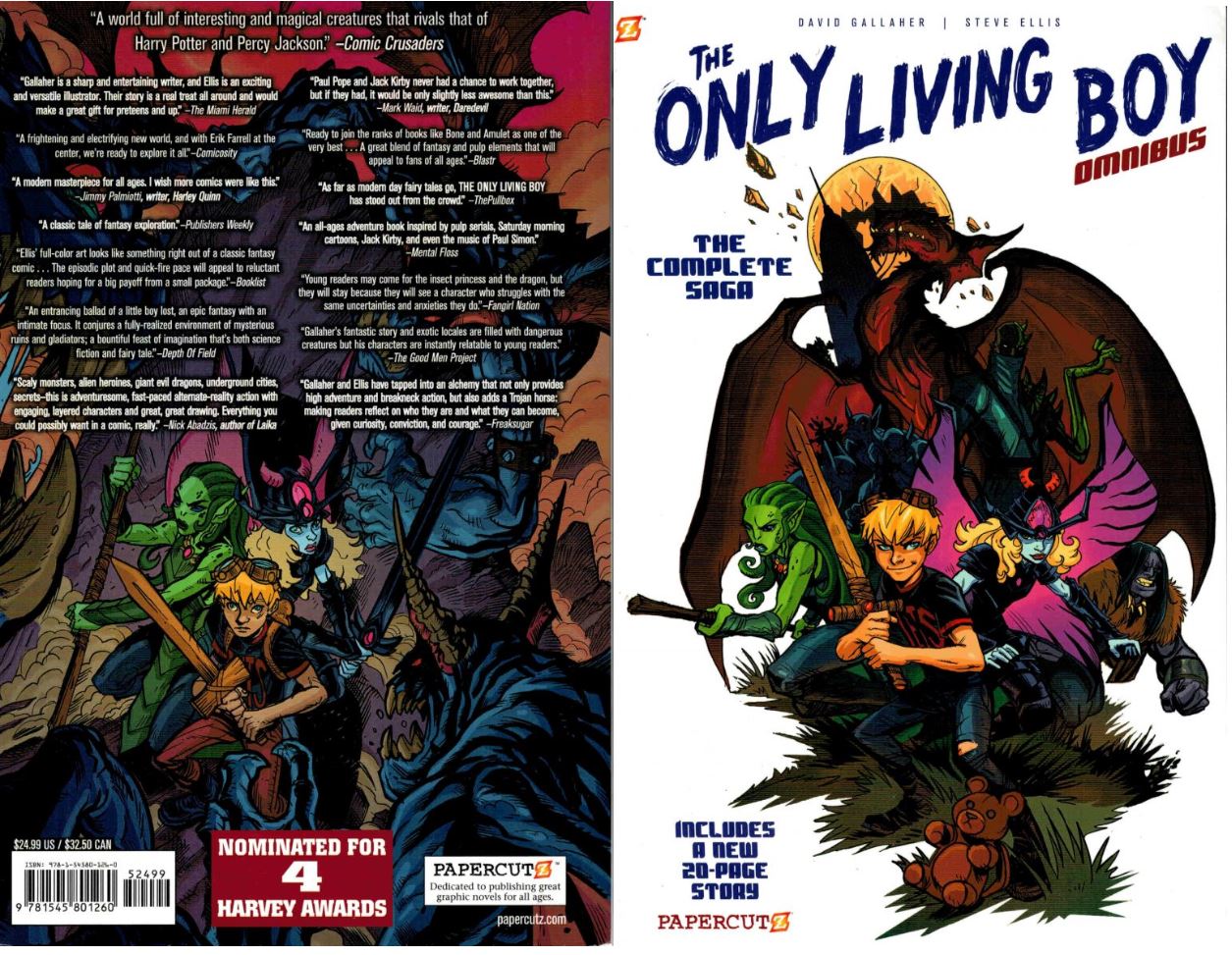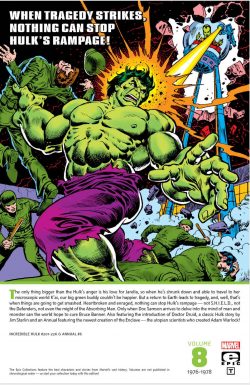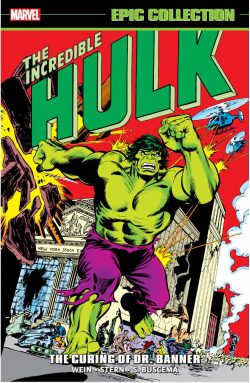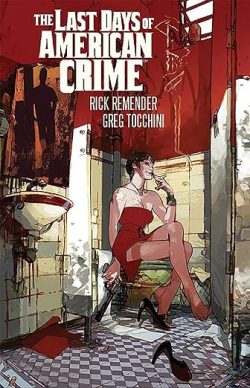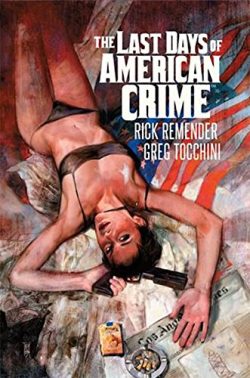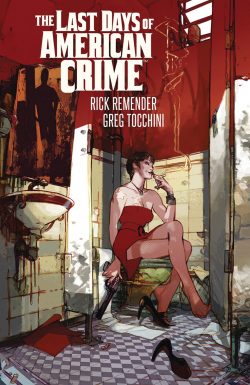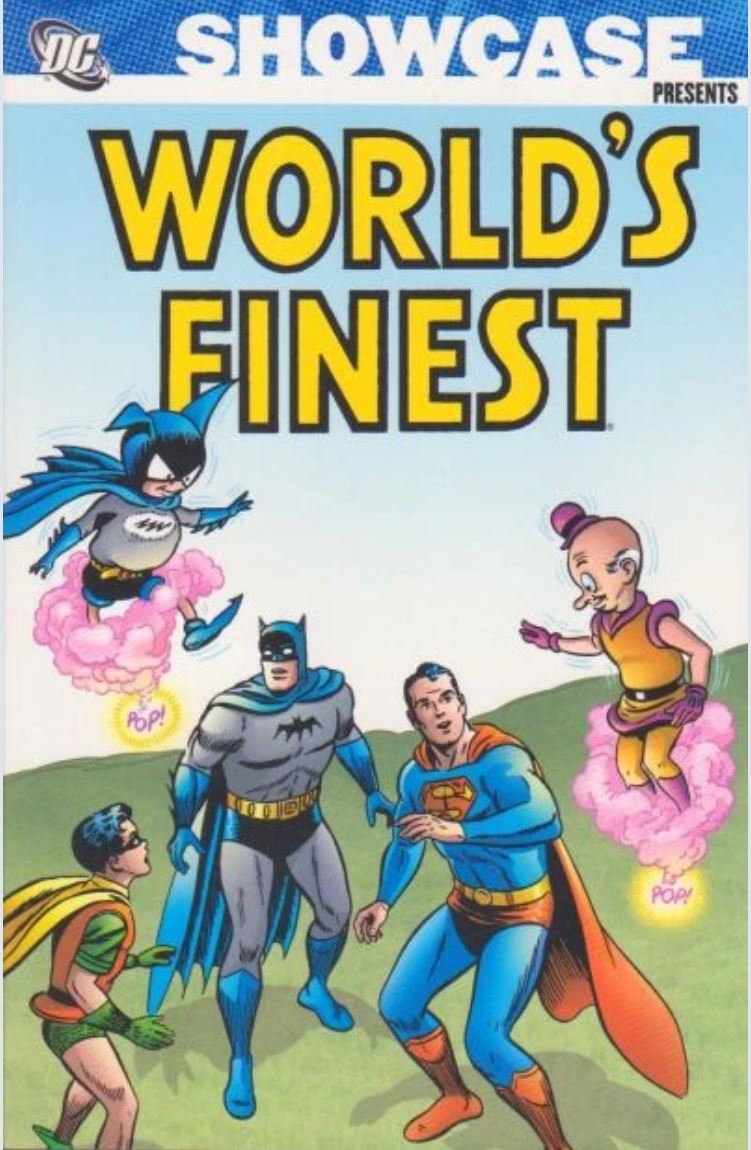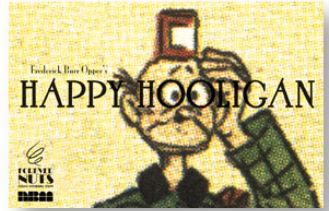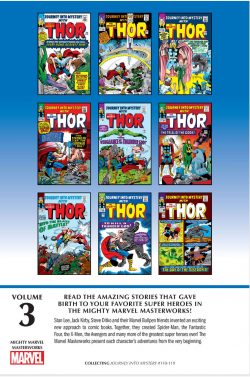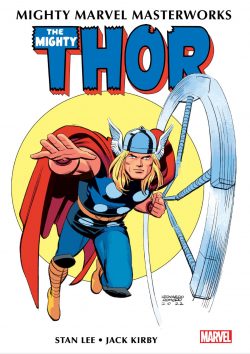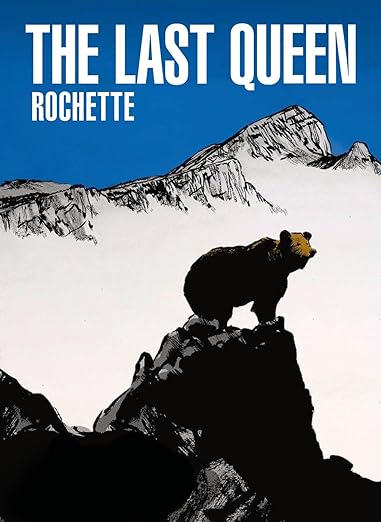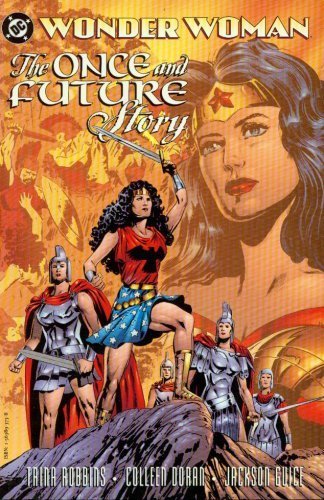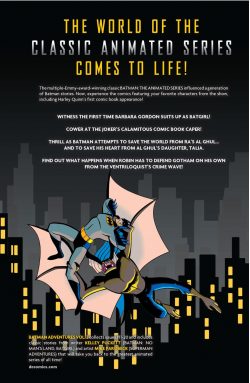
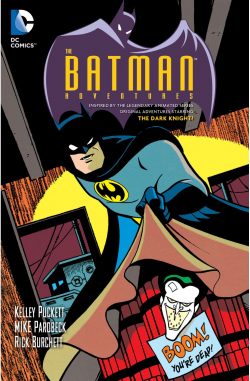
By Kelley Puckett, Mike Parobeck & Rick Burchett & various (DC Comics)
ISBN: 978-1-4012-5463-6 (TPB/Digital edition)
As conceived and delivered by Eric Radomski, Bruce Timm & latterly Paul Dini, Batman: The Animated Series began airing in the US on September 5th 1992, running to September 15th 1995 before being rebooted for a second bite at the cherry. The shows – ostensibly for kids – revolutionised everybody’s image of the Dark Knight and happily fed back into a print iteration, introducing characters like Harley Quinn to the comics canon and leading to some of the absolute best comic book tales in the hero’s decades of existence.
Employing a timeless visual style dubbed “Dark Deco”, the show mixed elements from all iterations of the character and, without diluting the power, tone or mood of the premise, re-honed the grim avenger, his team, allies and enemies into gleefully accessible, thematically memorable forms that the youngest of readers could enjoy, whilst adding dark shades of exuberance and panache only most devout and obsessive Batmaniac could possibly object to.
The comic book iteration was prime material for collection in an emergent trade paperback market, but only the first year was released, plus miniseries such as Batman: Gotham Adventures and Batman Adventures: the Lost Years.
This second compendium gathers issues #11-20 of The Batman Adventures (originally published from August 1993 to May 1994) in a scintillating, no-nonsense frenzy of family-friendly Fights ‘n’ Tights fantasy from Kelly Puckett, Mike Parobeck & Rick Burchett.
Puckett is a writer who truly grasps the visual nature of the medium and his stories are always fast-paced, action-packed and stripped down to the barest of essential dialogue. That gift has never been better exploited than by Parobeck who was at that time a rising star, especially when graced by Burchett’s slick, clean inking.
Although his professional comics career was tragically short (1989-1996 when he died, aged 31, from complications of Type 1 Diabetes) Mike Parobeck’s gracefully fluid, exuberantly kinetic, fun-fuelled animation-inspired drawing style revolutionised superhero depiction and sparked a renaissance in kid-friendly comics – and merchandise – at DC and everywhere else.
Like the show, each story is treated as a 3-act play, and kicking off events here is moodily magnificent thriller ‘The Beast Within!’ as obsessed scientist Kirk Langstrom agonises. He believes he is somehow uncontrollably transforming into the monstrous Man-Bat whenever ‘The Sleeper Awakens!’ The truth is far more sinister, but incarcerated in ‘G.C.P.D.H.Q!’ neither the troubled chemist nor his beloved wife Francine can discern ‘The Awful Truth!’ Happily, ever-watchful Batman plays by his own rules…
Following in with a stunning shift of focus, young Barbara Gordon makes a superhero costume for a party on ‘Batgirl: Day One!’ and subsequently stumbles into a larcenous ‘Ladies Night’ when the High Society bash is crashed by rejected Joker groupie Harley Quinn and plant-based plunderer Poison Ivy. With no professional help on hand, Babs must act as ‘If the Suit Fits!’ and tackle the bad girls herself… and then Catwoman shows up for frantic ferocious finale ‘Out of the Frying Pan!’…
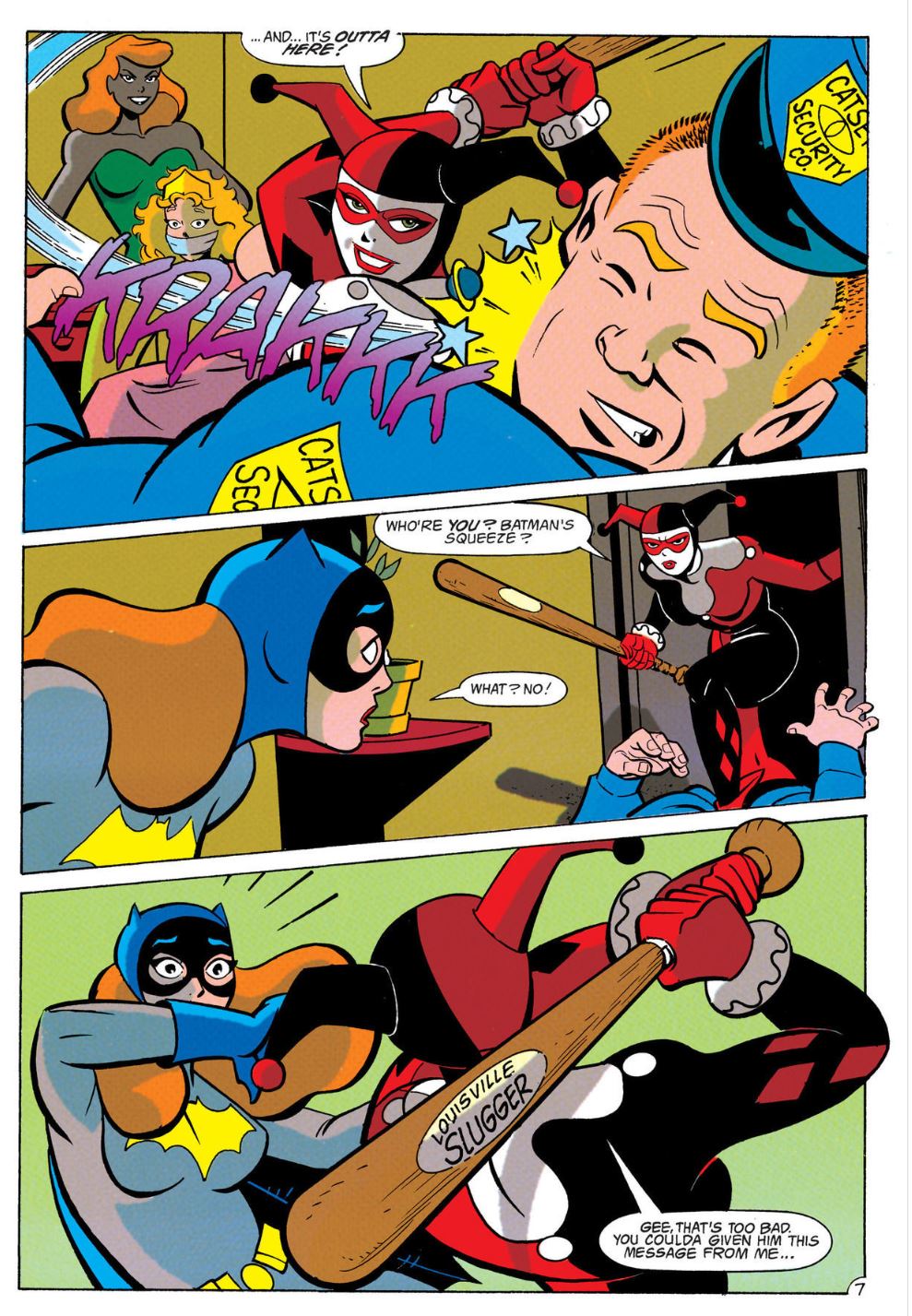
The troubled relationship of Batman and Talia, Daughter of The Demon was tackled with surprising sophistication in ‘Last Tango in Paris’ with the sometime-lovers teaming up to recover a statue stolen from her diabolical eco-terrorist dad Ra’s Al Ghul.
‘Act 1: Old Flame’ sees them stumble into a trap set by one of The Demon’s rivals, but turn the tables in ‘Act 2: Paris is Burning’ before each of the trysting couple’s true motivations are exposed in heartbreaking ‘Act 3: Where there’s Smoke’…
Despite being a series to be read one glorious tale at a time, the creators had laid groundwork for an epic sequence to come, but whilst Bruce is occupied in Europe, the spotlight shifts to Dick Grayson as the Teen Wonder worries about how to break to his mentor news of a game-changing decision, even as ‘Public Enemy’ sees the latest incomprehensible rampage of deranged bandit by The Ventriloquist…
‘Act 1: Greakout!’ finds the cunningly carved crook and his silently screaming stooge escaping clink to orchestrate a massive heist in ‘Act 2: The Grinks Jog’, only to ultimately have the limelight stolen by Robin in ‘Act 3: The Gig Glock!’…
Police Commissioner Jim Gordon teams with Batman in ‘Badge of Honor’, united to save a undercover cop held hostage by Boss Rupert Thorne in ‘Act 1: Officer Down!’ before ‘Act 2: Cop Killer!’ tracks the seemingly unstoppable duo hunting down the fallen hero only to face their greatest obstacle in ‘Act 3: Code Dead!’ That’s when slick operator Thorne finally himself gets his hands dirty…
In ‘The Killing Book’ the Harlequin of Hate takes offence at his “unflattering” portrayal in comics with ‘Act 1: Seduction of the Innocent!’ seeing The Joker kidnap the publisher’s latest overnight sensation in order to show in ‘Act 2: How to Draw Comics the Joker Way!’ Naturally ‘Act 3: Comics and Sequential Death!’ only prove Batman is not a guy to tolerate funnybooks or artistic upstarts.
The seeds planted in Paris flourish and bloom in ‘The Tangled Web’ as The Demon’s latest act of genocide begins with ‘Act 1: Into the Shadows!’ However ‘Act 2: New World Order’ proves yet again Ra’s has critically underestimated his enemy, as a different masked stranger saves Earth from catastrophe in ‘Act 3: What Doth it Profit a Man?’
Following that epic victory Robin meets the baffling and mysterious Batgirl for the first time on ‘Decision Day’ when conflicted Barbara Gordon again succumbs to the addictive lure of costumed crimefighting. Thwarting a bomb plot in ‘Act 1: Eyewitness!’ the feisty but untutored firebrand opts to catch the culprit herself in ‘Act 2: Smoking Gun’, even if she does grudgingly accept a little assistance from the Teen Wonder in ‘Act 3: No Justice, No Peace!’
Gotham’s Master of Terror turns up inside Batman’s head sparking ‘Troubled Dreams’ as the Dark Knight becomes just one of many sufferers of ‘Act 1: Nightmare over Gotham!’ Just for once, however, there’s another instigator of panic in the mix, enquiring in ‘Act 2: Who Scares The Scarecrow?’ until the Caped Crusader catches the real dream-invader in ‘Act 3: Beneath the Mask’…
The fabulous foray into classic four-colour fun concludes with another spectacular yet hilarious outing for a Terrible Trio of criminals who bear a remarkable resemblance to DC editors Dennis O’Neil, Mike Carlin and Archie Goodwin. ‘Smells Like Black Sunday’ opens with ‘Act 1: And a Perfesser Shall Lead Them!’ as the Triumvirate of Terror bust out of the big house, hotly pursued by the Gotham Gangbuster in ‘Act 2: Flying Blind with Mastermind’.
Sadly their scheme to become a 3-man nuclear power falters as ‘Act 3: Legend of the Dark Nice’ finds the evil geniuses underestimating the sheer cuteness of guard dogs and their cataclysmic comrade’s innately gentle disposition…
Breathtakingly written and iconically illustrated, these stripped-down rollercoaster-romps are impeccable Bat-magic and this is a compendium every fan of any age and vintage will adore.
© 1993, 1994, 2015 DC Comics. All Rights Reserved.


